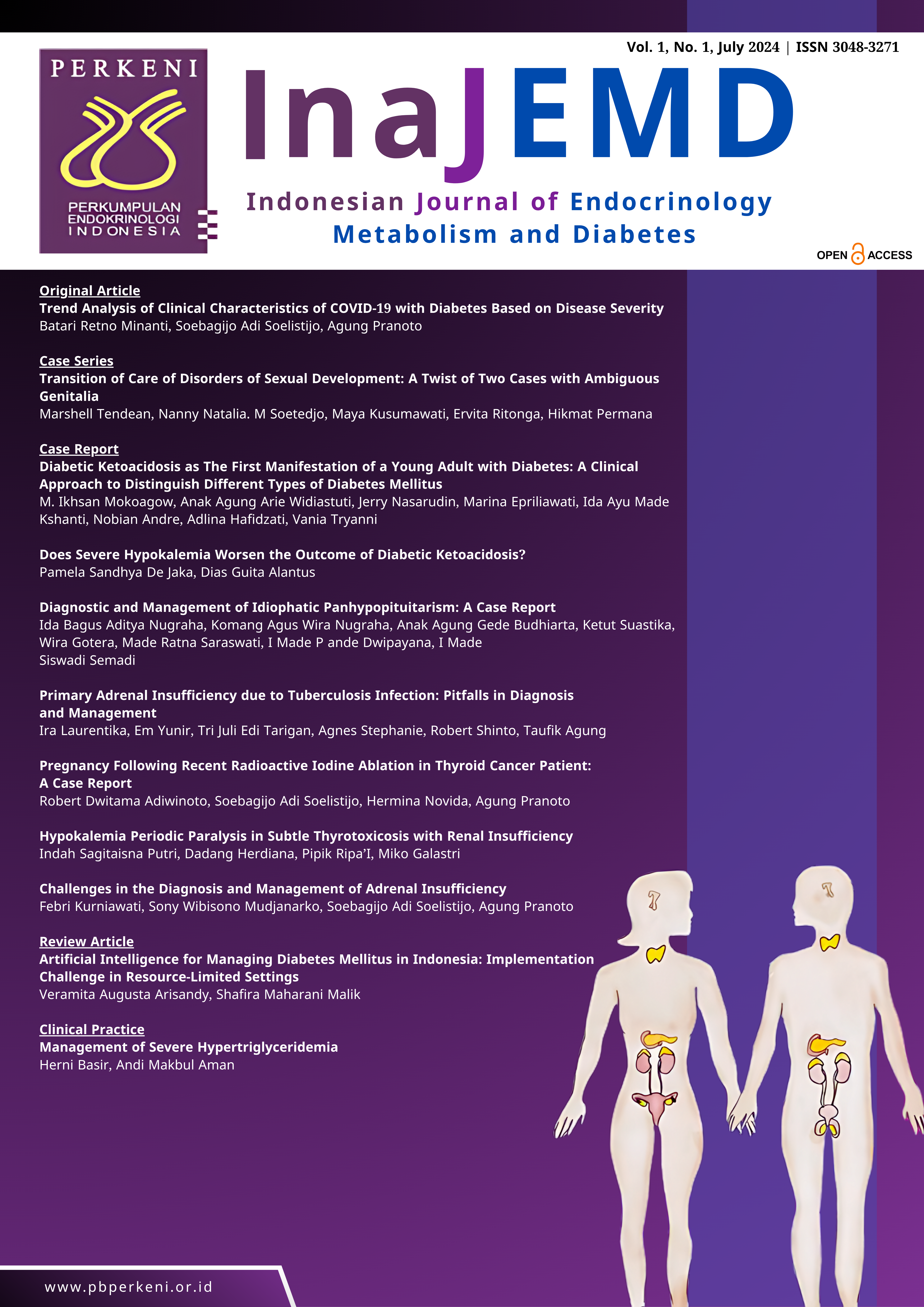Transition of Care of Disorders of Sexual Development: A Twist of Two Cases with Ambiguous Genitalia
Keywords:
Disorders of sexual development (dsd) , ambiguous genitalia , case seriesAbstract
Disorders of sexual development (DSD) is a congenital condition that requires an alteration in the development of chromosomal, gonadal, and anatomical sex is atypical. A report showed most of the patients in the 46XX DSD had congenital adrenal hyperplasia (CAH) at 69.23% followed by unknown under-virilization in the 46XY DSD group at 60.09%. Patient 1 diagnosed as DSD 46XX/non-classic congenital adrenal hyperplasia (NCAH) presented with primary amenorrhea, short stature, over-virilization (Prader 2), and 46XX karyotype. Laboratory examination showed elevated 17-hydroxyprogesterone (17OHP): 166.7 ng/ml (2.83 ng/ml), without salt wasting feature. Patient 2 diagnosed with DSD 46XY/type 2 5α -reductase deficiency (SAD) presented with cryptorchidism, under-masculinization (sinecker stage 3b), and 46XY karyotype. Laboratory examination showed elevated testosterone 613 ng/dL (4.6-38.3 ng/dL), decreased dihydrotestosterone (DHT) 11 ng/dL (>20 ng/dL), and elevated testosterone T/DHT ratio 55.73 (8-16). A deep understanding of pathophysiology, and approach to disease in each stage of life is important and warrants special treatment. Comprehensive multidisciplinary team management (MDT) is warranted in DSD management. Disease prognosis varies among each disorder: early detection, treatment compliance, and continuity of care are important to improve patient outcomes.
Downloads
Downloads
Published
Issue
Section
License
Copyright (c) 2024 Indonesian Society of Endocrinology

This work is licensed under a Creative Commons Attribution-NonCommercial-NoDerivatives 4.0 International License.
Authors retain copyright and grant the Indonesian Journal of Endocrinology, Metabolism and Diabetes (InaJEMD) the right of first publication with the work simultaneously licensed under a Creative Commons Attribution-NonCommercial-NoDerivatives 4.0 International License (CC BY-NC-ND 4.0) that allows others to share the work with an acknowledgement of the work's authorship and initial publication in this journal.
© Indonesian Journal of Endocrinology, Metabolism and Diabetes (InaJEMD). Published by the Indonesian Society of Endocrinology (PERKENI).





